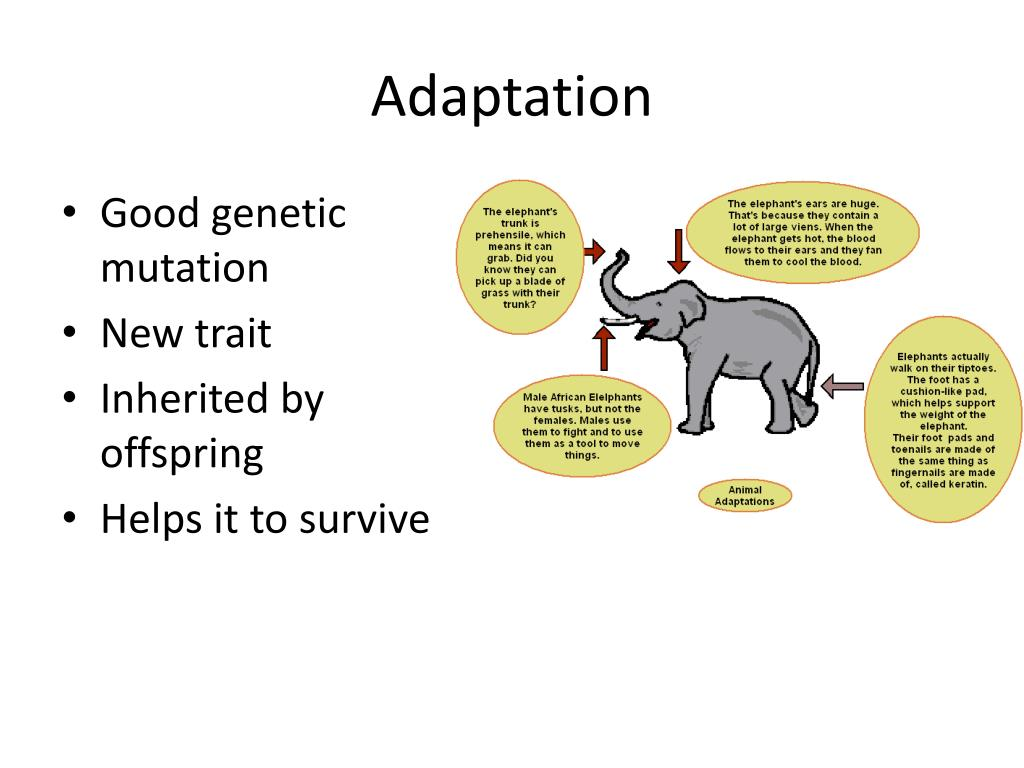Genetic adaptation is a fascinating process that allows organisms, like the house finch, to thrive in changing environments. Recent advancements in a groundbreaking pangenomic study reveal how a significant DNA inversion has enhanced the bird’s resistance to certain diseases, providing a remarkable example of evolutionary biology in action. This study not only showcases the intricate relationship between genetics and adaptability but also highlights how structural variations in DNA can influence survival. By employing advanced sequencing techniques, researchers are gaining deeper insights into the mechanisms of disease resistance and adaptation. Ultimately, understanding genetic adaptation in species like the house finch can offer valuable lessons about evolution and resilience in the face of new challenges.
The phenomenon of genetic adaptation, often referred to as evolutionary change, encompasses the ways species adjust their genetic makeup to survive amid environmental pressures. In the context of the house finch, these changes are crucial for improving their resistance to pathogens, showcasing how adaptive traits can emerge over time. This aspect of evolutionary biology is key in unraveling the complexities of how various organisms, including humans, can respond to infectious diseases through natural selection. Innovative studies, such as pangenomic research, play a vital role in revealing the underlying DNA variations that contribute to these adaptations. As scientists delve deeper into these genetic shifts, they unlock the potential for understanding not only avian survival but also broader implications for disease resistance across the animal kingdom.
Understanding Genetic Adaptation Through House Finch Studies
Genetic adaptation plays a crucial role in the survival of species, particularly in response to environmental pressures. The house finch serves as an exemplary model for understanding how these adaptations occur, especially regarding disease resistance. Recent studies utilizing cutting-edge pangenomic approaches reveal significant structural variations in the finch’s DNA, indicating how this common bird has evolved to combat various pathogens. By mapping out these genetic adaptations, researchers can glean insights into the mechanisms behind evolutionary biology, contributing to a broader understanding of genetic resilience in wildlife.
As scientists delve deeper into the genetic framework of the house finch, they are discovering that certain DNA modifications, such as inversions, have profound implications for survival against infectious diseases. Bohao Fang’s research highlights the importance of examining extensive genomic data rather than focusing on isolated genes. This comprehensive method uncovers how various adaptation mechanisms have shaped the finch’s resilience, illustrating a remarkable narrative of evolution in action. With each discovery, the evolutionary biology community gains a clearer perspective on how genetic adaptation can provide the necessary tools for species to thrive amidst changing environmental conditions.
The Role of Pangenomic Studies in Evolutionary Biology
Pangenomic studies are revolutionizing the way scientists approach evolutionary biology, particularly through the lens of genetic adaptation in species like the house finch. By employing advanced sequencing techniques that analyze variations in a population’s genome, researchers can discern patterns of evolution that have been historically overlooked. Bohao Fang’s investigation into the house finch’s pangenome showcases how extensive data collections can yield insights into genetic flexibility and disease resistance. This approach breaks down the limitations of traditional genetic studies centered on single base pairs, emphasizing the significance of larger structural changes in the genome.
The emphasis on genetic variation through pangenomic studies opens new avenues for understanding how organisms react to environmental stressors, including diseases. The findings related to house finches exemplify how structural variants not only facilitate adaptations but also contribute to the host’s interactions with pathogens. With ongoing research in this field, it’s clear that pangenomics will play an essential role in unraveling the complexities of evolutionary processes and the genetic adaptation of various species, underscoring the broader implications for conservation efforts and biomedical research alike.
In exploring how pangenomic studies reflect evolutionary biology, the house finch stands out as an exceptional subject. Researchers like Fang emphasize the historical context provided by DNA samples collected over years, which capture evolutionary changes in response to diseases. This longitudinal perspective allows scientists to track genetic adaptations against pathogens, gaining insights into the mechanisms of resilience. Such research not only informs our understanding of the house finch’s disease resistance but lays groundwork for exploring similar adaptations in other species.
Pangenomic analyses reveal not only the evolutionary history of an organism but also how various genetic elements interact over time. In the case of the house finch, the presence of a significant DNA inversion suggests that long-term exposure to pathogens has shaped its genetic landscape dramatically. These studies highlight how closely linked genetic adaptation is to an organism’s survival and showcase the importance of multi-species comparisons in evolutionary biology. The insights gleaned from house finches could also have broader implications for understanding human genetic responses to infectious diseases.
DNA Inversion: A Key to Disease Resistance in House Finches
DNA inversions are critical structural changes in the genetic code that can significantly influence an organism’s phenotypic traits, including disease resistance. The house finch has been identified to exhibit such an inversion, a discovery made possible through modern pangenomic methods. By analyzing a wide array of genetic data, researchers were able to pinpoint this alteration, suggesting it plays a pivotal role in the bird’s ability to fend off specific pathogens. This showcases how even slight changes in DNA can lead to notable advantages in survival, making DNA inversions a focal point in the study of evolutionary adaptations.
Fang’s research sheds light on the intricate relationship between DNA inversions and evolutionary pressure exerted by pathogens. The findings not only highlight the importance of structural variations in the genome but also reveal how these adaptations have persisted over millions of years. Understanding the implications of such inversions offers insights into the mechanisms of adaptation, which could potentially guide future studies on disease resistance in other species, including humans. As pangenomic technologies evolve, the identification and analysis of these crucial genetic changes will likely deepen our understanding of evolutionary biology.
Disease Resistance and Natural Selection in House Finches
The study of disease resistance in house finches provides a unique lens through which to examine natural selection in action. Over the years, these birds have demonstrated an impressive capacity to adapt to a rapidly changing environment, particularly when faced with infections from pathogens like those causing conjunctivitis. The significant DNA inversion identified in their genomes not only underscores the role of genetic adaptation but also illustrates how natural selection operates to favor traits that enhance survival against diseases. This dynamic process highlights the interplay of genetics and environment, showcasing how species can evolve in response to new challenges.
Analyzing the genetic makeup of house finches allows researchers to see how natural selection shapes populations over time, particularly amid disease outbreaks. Findings suggest that as pathogens evolve, so too must their host species in order to survive. Fang’s exploration of the genetic history of house finches reinforces the concept that disease resistance is a critical factor driving evolutionary change. With this knowledge, scientists are better equipped to understand the broader implications for wildlife management and conservation, as well as the adaptability of other organisms faced with similar difficulties.
Insights into Evolutionary Biology from House Finch Research
Research into the evolutionary biology of the house finch offers unique perspectives on how species adapt over time, especially regarding disease resistance. The rich pangenomic data showcasing the finch’s DNA inversion provides essential clues about the mechanisms that drive adaptation in wild populations. As scientists analyze these genetic records, they are uncovering the complexities of evolutionary processes, which can influence future biological research, conservation strategies, and our understanding of genomics in broader contexts.
The insights garnered from house finch studies underscore the need for a larger framework to understand evolutionary biology. By focusing on the genetic adaptations of this common species, researchers highlight vital lessons on how to approach studies of biodiversity and resilience. The role that genetic changes play in the survival of house finches against diseases reflects a fundamental aspect of life on Earth—adaptation. This case study not only enriches the field of evolutionary biology but informs our perspective on human health, particularly in understanding how genetic variation contributes to disease susceptibility.
The Importance of Structural Variation in Evolutionary Studies
Structural variations, such as inversions within genomes, point to the remarkable potential for adaptive evolution in natural populations. In the case of the house finch, the significant DNA inversion has been linked to enhanced disease resistance, showcasing how such changes can influence evolutionary trajectories. Bohao Fang’s findings highlight the importance of considering these structural elements when examining genetic adaptation. By embracing a broader vision of genomic data, researchers can uncover crucial insights into how populations respond to environmental stressors.
The role of structural variation extends beyond individual species, acting as a key component of evolutionary mechanisms across taxa. The discovery of vital genetic differences in house finches urges the scientific community to explore these variations in other organisms as well. As researchers aim to understand the broader implications of genetic adaptation, recognizing the significance of structural changes aids in grasping how evolution operates amid environmental challenges. This understanding can contribute to more effective conservation strategies and inform studies on the resilience of various species in the face of changing climates and emerging diseases.
Implications of House Finch Research for Human Health
The implications of research into house finch genetics resonate beyond avian studies, extending to human health, particularly in understanding disease resistance. The insights gained from the house finch’s DNA inversion provide valuable reflections on how natural resistance mechanisms work, potentially guiding future research into human genetics. By learning from the genetic adaptations that have enabled house finches to thrive against infectious challenges, scientists can refine their approaches to studying human diseases and developing effective therapies.
Moreover, understanding the evolutionary responses of house finches to pathogens can inform public health strategies in humans. Studying how genetic adaptation occurs over generations provides a foundation for grasping how humans might adapt physiologically to emerging infectious diseases. The methodology utilized in house finch research, particularly pangenomic approaches, may pave the way for innovative genomic studies in humans, uncovering the intricate dance between genetics and disease resistance that shapes our health.
Future Directions in Genetic Adaptation Research
As the landscape of genetic research broadens, future studies will no doubt build upon the groundbreaking findings of house finch research. The innovative pangenomic approaches utilized by researchers like Bohao Fang are paving the way for a new understanding of genetic adaptation. Moving forward, scientists will likely focus on consolidating knowledge of structural variations within genomes and their implications for evolutionary biology. This could foster interdisciplinary collaborations aimed at untangling the complexities of adaptations across numerous species.
The future directions in genetic adaptation research emphasize the importance of understanding the evolutionary forces that shape biodiversity. By integrating findings from house finch studies, researchers can enhance predictive models of how species might cope with environmental changes and emerging diseases. The knowledge gained from these avian studies will not only contribute to evolutionary biology but also hold significant implications for conservation efforts, public health, and our understanding of adaptation mechanisms in close and distant relatives of the house finch.
Frequently Asked Questions
How does genetic adaptation occur in organisms like the house finch?
Genetic adaptation in organisms such as the house finch occurs through natural selection, where advantageous traits are preserved over generations. Recent studies, particularly a pangenomic study, have revealed that significant DNA alterations, including DNA inversions, can enhance disease resistance, thereby aiding survival in changing environments.
What role do DNA inversions play in the genetic adaptation of the house finch?
DNA inversions play a crucial role in the genetic adaptation of house finches by facilitating large-scale structural variations in their genomes. These alterations can result in improved resistance to diseases, as demonstrated in recent research that highlighted a specific DNA inversion linked to the house finch’s ability to combat pathogens.
What insights can we gain from a pangenomic study of the house finch regarding evolutionary biology?
A pangenomic study of the house finch provides valuable insights into evolutionary biology by examining extensive genetic data across multiple specimens. This comprehensive approach helps researchers understand how species adapt to diseases over time, revealing mechanisms of genetic adaptation that would be missed in traditional studies focused on single genes.
How do structural variants contribute to disease resistance in the house finch?
Structural variants, including significant DNA alterations discovered in the house finch’s genome, contribute to disease resistance by potentially enhancing the organism’s immune response. Such adaptations are essential for survival in the wild, as they allow species to evolve and cope with emerging pathogens without relying on external interventions like vaccines.
What is the significance of studying genetic adaptation in the context of disease resistance?
Studying genetic adaptation in the context of disease resistance is significant because it uncovers how organisms, such as the house finch, evolve to withstand infectious diseases. Understanding these adaptive traits has broader implications for evolutionary biology, as it can illuminate how other species, including humans, may respond to health threats over time.
What is the impact of environment on genetic adaptation as seen in the house finch?
The environment significantly impacts genetic adaptation, as seen in the house finch, which has evolved genetic traits to cope with disease threats present in its habitat. The pangenomic approach has shown how long-standing structural variations in the finch’s DNA have allowed it to adaptively respond to environmental pressures, illustrating the dynamic relationship between genetic makeup and external factors.
| Key Points |
|---|
| A new pangenomic study shows that a DNA inversion in house finches may confer disease resistance. |
| The research utilized advanced sequencing techniques to provide a broader view of genetic adaptation. |
| This study is important for understanding evolutionary responses to diseases in wildlife. |
| The findings may have implications for understanding genetic responses to pathogens in humans. |
| Further research is needed to explore the mechanisms behind these genetic adaptations. |
Summary
Genetic adaptation plays a crucial role in how species respond to changing environments and diseases. Recent research on the house finch illuminates the significant effects of DNA structural variations that contribute to disease resistance. By employing innovative genomic approaches, scientists have uncovered how these birds have adapted over time to cope with diseases, providing valuable insights that could apply to other organisms, including humans. This study sets the stage for future exploration in genetic adaptation and emphasizes the importance of understanding evolutionary responses in a rapidly changing world.



